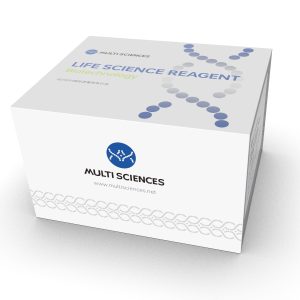HGNC ID: 320
Target Abstract:
Receptor for Advanced Glycation End Products (RAGE) is a 35 kDa transmembrane receptor belonging to the immunoglobulin superfamily, named after its ability to bind to advanced glycation end products. Due to its innate immune inflammatory function and the ability to recognize a specific class of ligands through a common motif, RAGE is generally considered as a pattern recognition receptor. RAGE is associated with several chronic diseases, such as atherosclerosis, peripheral vascular diseases, myocardial infarction, congestive heart failure, diabetes, Alzheimer’s disease, etc. Compared to other tissues, RAGE has the highest expression in the lungs, especially in type I alveolar epithelial cells, while it is not expressed in idiopathic pulmonary fibrosis (IPF), indicating that the expression and regulation of RAGE in the pulmonary system differ from those in the cardiovascular system. Inhibition or knockout of RAGE leads to impaired cell adhesion, increased cell proliferation and migration.
AGER Target Infomation Overview
- Target Symbol: AGER, advanced glycosylation end-product specific receptor
- Gene Groups: C2-set domain containing; Scavenger receptors
- Alias: RAGE; SCARJ1; sRAGE
- Alias Names: receptor for advanced glycation end-products
AGER, advanced glycosylation end-product specific receptor Target Infomation by Species
- Human
- Mouse
- Rat
Human AGER Target Information
- Target Symbol: AGER, advanced glycosylation end-product specific receptor
- Alias:
- advanced glycosylation end product-specific receptor
- MGC22357
- RAGE
- RAGE isoform delta
- RAGE isoform NtRAGE-delta
- RAGE isoform sRAGE-delta
- receptor for advanced glycation end-products variant 20
- receptor for advanced glycosylation end products
- receptor for advanced glycosylation end-products
- SCARJ1
- sRAGE
- NCBI_Gene: 177
- UniProtKB: Q15109
Human AGER Predicted Functions
Enables several functions, including S100 protein binding activity; amyloid-beta binding activity; and identical protein binding activity. Involved in several processes, including modulation of chemical synaptic transmission; positive regulation of intracellular signal transduction; and positive regulation of macromolecule metabolic process. Located in apical plasma membrane; cell junction; and fibrillar center. Implicated in several diseases, including autoimmune disease (multiple); cardiovascular system disease (multiple); cystic fibrosis; kidney failure (multiple); and lupus nephritis. Biomarker of several diseases, including artery disease (multiple); chronic kidney disease (multiple); congestive heart failure (multiple); diabetic retinopathy (multiple); and lung disease (multiple).
Mouse Ager Target Information
- Target Symbol: Ager, advanced glycosylation end product-specific receptor
- Alias:
- RAGE
- NCBI_Gene: 11596
Mouse Ager Predicted Functions
Enables S100 protein binding activity; advanced glycation end-product binding activity; and heparin binding activity. Involved in several processes, including cellular response to amyloid-beta; negative regulation of long-term synaptic potentiation; and positive regulation of cytokine production. Acts upstream of or within several processes, including induction of positive chemotaxis; negative regulation of advanced glycation end-product receptor activity; and positive regulation of macromolecule metabolic process. Located in extracellular space and plasma membrane. Is expressed in several structures, including alimentary system; brain; genitourinary system; hemolymphoid system gland; and lung. Human ortholog(s) of this gene implicated in several diseases, including autoimmune disease (multiple); cardiovascular system disease (multiple); cystic fibrosis; kidney failure (multiple); and lupus nephritis. Orthologous to human AGER (advanced glycosylation end-product specific receptor).
Rat Ager Target Information
- Target Symbol: Ager, advanced glycosylation end product-specific receptor
- Alias:
- advanced glycosylation end product-specific receptor variant 2
- advanced glycosylation end product-specific receptor variant 3
- advanced glycosylation end product-specific receptor variant 4
- advanced glycosylation end product-specific receptor variant 5
- RAGE
- receptor for advanced glycosylation end products
- NCBI_Gene: 81722
Rat Ager Predicted Functions
Enables S100 protein binding activity and high mobility group box 1 binding activity. Involved in several processes, including positive regulation of apoptotic process; regulation of cell migration; and response to hexose. Located in several cellular components, including basal plasma membrane; cell surface; and neuronal cell body. Used to study several diseases, including diabetic retinopathy; impotence; renal fibrosis; thromboangiitis obliterans; and type 2 diabetes mellitus. Biomarker of several diseases, including bone disease (multiple); cardiovascular system disease (multiple); colorectal carcinoma; diabetic encephalopathy; and lung disease (multiple). Human ortholog(s) of this gene implicated in several diseases, including autoimmune disease (multiple); cardiovascular system disease (multiple); cystic fibrosis; kidney failure (multiple); and lupus nephritis. Orthologous to human AGER (advanced glycosylation end-product specific receptor).

